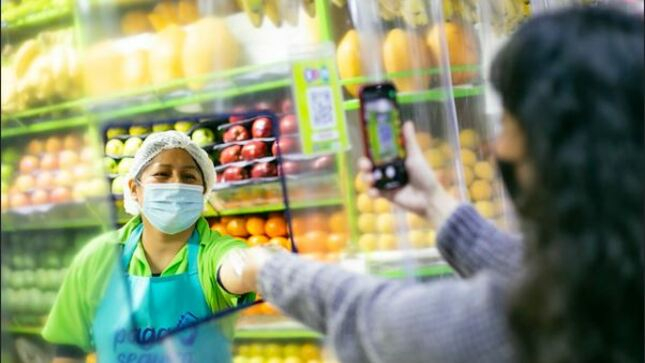
Peru occupies sixth place in the financial inclusion ranking and climbs one position at the regional level, placing itself above Mexico and Bolivia, with a score of 43.3 out of 100. Although it is still below the average for the region ( 45.5), This advance is a reflection of the growth in the use of digital wallets, which increasingly reaches more of the population, according to the third edition of Credicorp’s Financial Inclusion Index (IIF).
The adoption and use of digital wallets have marked a growth trend in terms of possession and use. Currently, 45% of Peruvians have payment applications or mobile wallets, 12 percentage points more than in 2022, this increase is only surpassed by Colombia (61%).
Likewise, 62% of Peruvians who have these wallets are classified as frequent users – they use them constantly, several times a week or daily – a percentage that climbs 13 pps. compared to the last year.
“Considering that a similar increase, in the area of digital walletsoccurred between 2021-2022, we can talk about a general trend in favor of these, since they have been rising for 3 consecutive years. We can say that digital wallets are already consolidated as one of the main drivers of financial inclusion in Peru and the region. To talk about the local case, they are already the preferred digital medium in purchases and services,” explained Gianfranco Ferrari, CEO of Credicorp.
The widest gap is educational
After 3 years of measurement, the country has taken a path of improvement in terms of financial inclusion where three dimensions are considered: access, use and perceived quality of the financial system. The percentage of the Peruvian population with a level of financial inclusion achieved increased noticeably, going from 15% in 2021 to 21% in 2023.
The percentage of people at the In Progress level stands at 36% (up 4 pps. since 2021) and people at the Low level fell from 53% to 42%. For the purposes of this index, the term “attained” refers to the state in which a person not only knows well and has access to financial tools, but also uses them efficiently and regularly, confident in their usefulness and quality.
However, it is evident that the most vulnerable populations in the financial system continue to be, as of 2021, the same: women, informal and unemployed workers, those who live in rural areas, people with low educational levels and those who do not have access to the internet. The indicator that shows the widest gap is education, because while people with postgraduate degrees achieve 67.2 points, those without studies do not reach 29 points.
Data:
- A scale from 0 to 100 was defined, in which a higher score means a higher level of financial inclusion.
- To collect the information, more than 13,000 people over 18 years of age were interviewed in the countries evaluated, and in the national case, 5,000 people were interviewed.
- Peru, Chile, Bolivia, Colombia, Argentina, Ecuador, Panama and Mexico are the 8 countries that went through the evaluation in this edition.
Source: Larepublica
Alia is a professional author and journalist, working at 247 news agency. She writes on various topics from economy news to general interest pieces, providing readers with relevant and informative content. With years of experience, she brings a unique perspective and in-depth analysis to her work.












